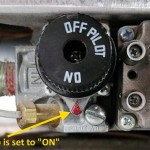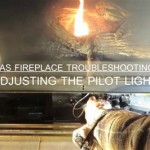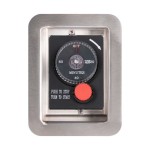Homemade Fireplace Heat Exchanger: Boosting Efficiency and Saving Energy
Fireplaces are a beloved feature in many homes, offering warmth, ambiance, and a comforting focal point. However, traditional open fireplaces can be notoriously inefficient, losing much of their heat up the chimney. A homemade fireplace heat exchanger can significantly improve the efficiency of your fireplace, allowing you to enjoy the benefits of a crackling fire while reducing your energy consumption and heating costs. By capturing and distributing the heat generated by the fire, these DIY solutions can make your home more comfortable and energy-efficient.
The Basics of Fireplace Heat Exchangers
A fireplace heat exchanger is a device that transfers heat from the hot gases rising up the chimney to the air in your home. This process, known as convection, utilizes the natural tendency of warm air to rise. The heat exchanger typically consists of a series of metal tubes or plates positioned within the chimney. Air is drawn across these surfaces, absorbing the heat and circulating it back into your living space. This method allows you to capture a significant portion of the heat that would otherwise be lost, making your fireplace a more effective heating source.
DIY Heat Exchanger Options
There are several DIY methods for constructing a fireplace heat exchanger, each with its own advantages and considerations. Some popular approaches include:
1. Water-Based Heat Exchanger
A water-based heat exchanger uses a series of pipes or coils submerged in water to capture heat from the fireplace. The heated water can then be circulated throughout your home using a pump and radiator system. This method is particularly effective for larger homes or those with existing central heating systems. However, it requires more complex installation and maintenance, including regular water changes and corrosion prevention.
2. Air-Based Heat Exchanger
An air-based heat exchanger uses a series of metal plates or tubes to transfer heat directly to the air in your home. This system is simpler to install and maintain than a water-based system and often requires less material. Air-based heat exchangers can be constructed from readily available materials such as metal pipes and fans, and can be adapted to fit a variety of fireplace designs.
Benefits of a Homemade Heat Exchanger
Installing a homemade fireplace heat exchanger offers numerous advantages:
1. Improved Heating Efficiency
The most significant benefit of a fireplace heat exchanger is its ability to increase the efficiency of your fireplace. By capturing and distributing heat that would otherwise be lost, you can significantly reduce your reliance on other heating sources, leading to lower energy bills and a smaller carbon footprint.
2. Cost Savings
The initial investment in materials for a DIY heat exchanger is often significantly lower than purchasing a pre-built system. Moreover, by increasing the efficiency of your fireplace, you can save money on heating costs over time.
3. Enhanced Comfort and Convenience
Heating your home with a fireplace can provide a sense of warmth and comfort that other heating methods may lack. By incorporating a heat exchanger, you can ensure this warmth reaches every corner of your home, making your living space more comfortable and enjoyable.
Considerations before Building a DIY Heat Exchanger
While building a homemade fireplace heat exchanger can be an effective way to improve efficiency, there are certain considerations to keep in mind before undertaking this project:
1. Safety is paramount
Safety should be the top priority when working with heat and fire. Ensure that all components are properly installed and secured. Avoid using flammable materials near the firebox. It is crucial to consult with a qualified professional to ensure that your heat exchanger design meets local building codes and safety regulations.
2. Proper Installation is essential
A properly installed heat exchanger will maximize its efficiency and minimize safety risks. Refer to detailed instructions and diagrams when building your system. Consult with a professional if you are unsure about any aspect of the installation process.
3. Maintenance is necessary
Over time, your heat exchanger may need cleaning and maintenance to ensure optimal performance. Regularly inspect the components for any signs of damage or wear. Schedule regular cleaning to remove any accumulated soot or debris.

Fireplace Heat Exchanger

Fire Place Heat Exchanger Fireplace Blower

And Easy Fireplace Heater 5 Steps Instructables

Fireplace Heat Exchanger
Masonry Fireplace Heat Exchanger Hearth Com Forums Home

How To Build Diy Air Cross Flow Heat Exchanger Hrv Lou Dawson Author Ski Mountaineer

Diy Passive Heat Exchanger For Wood Stove The Do It Yourself World Articles

Fire Place Heat Exchanger Wood Fireplace Gas

Make Your Fireplace More Efficient Diy Heat Exchanger

Fireplace Heat Exchanger
Related Posts








